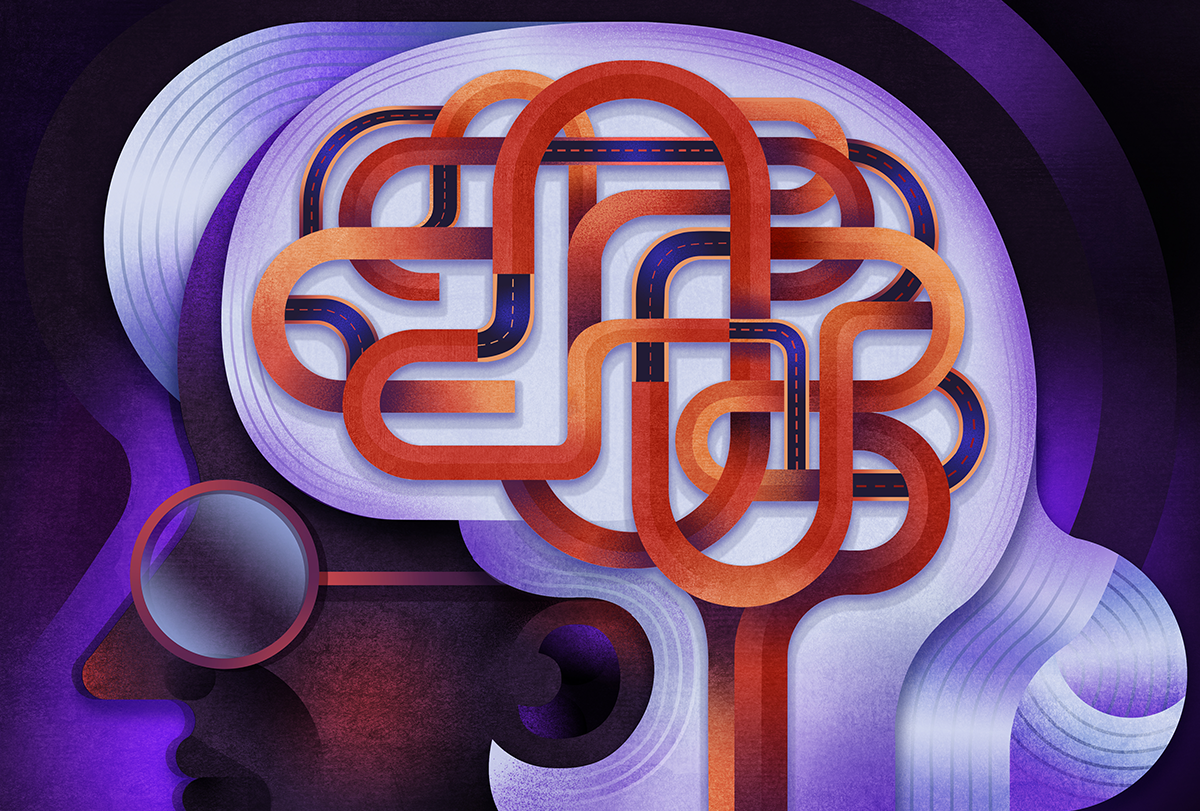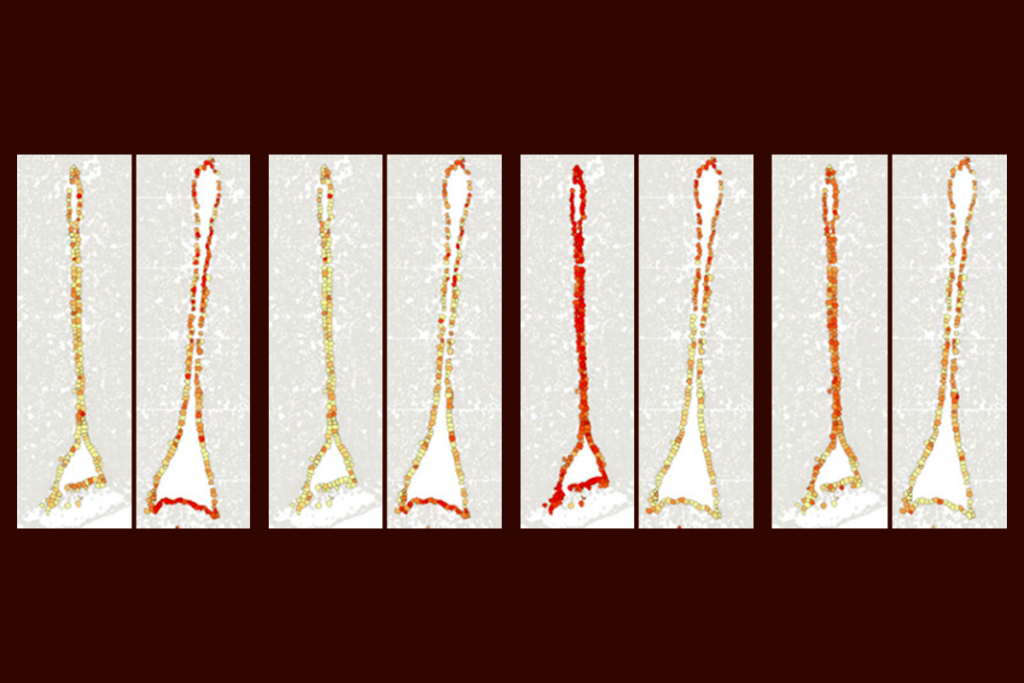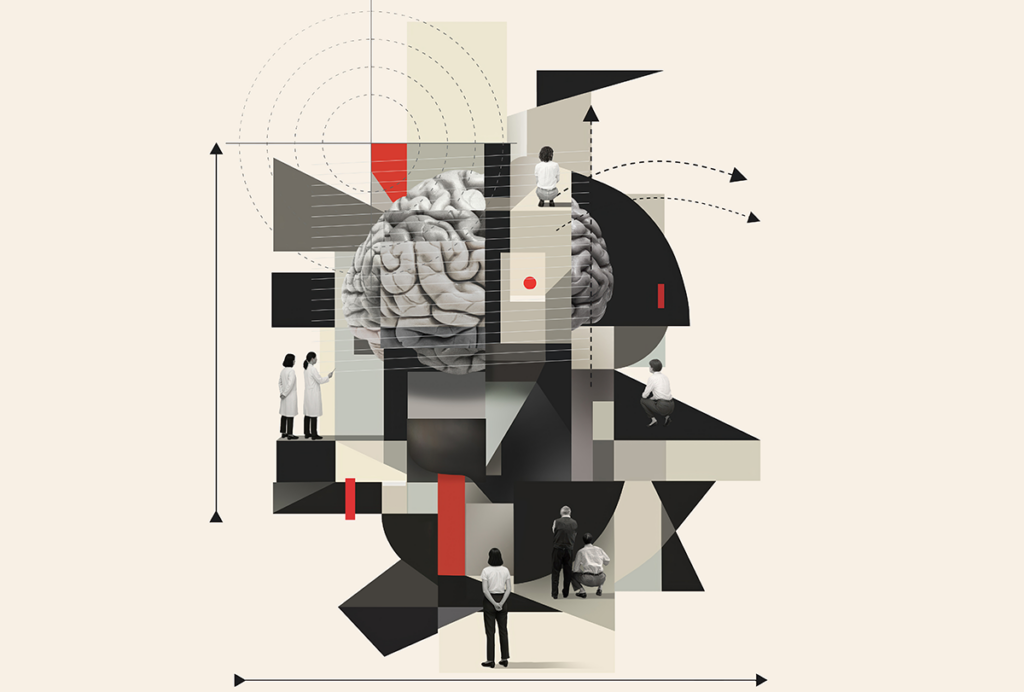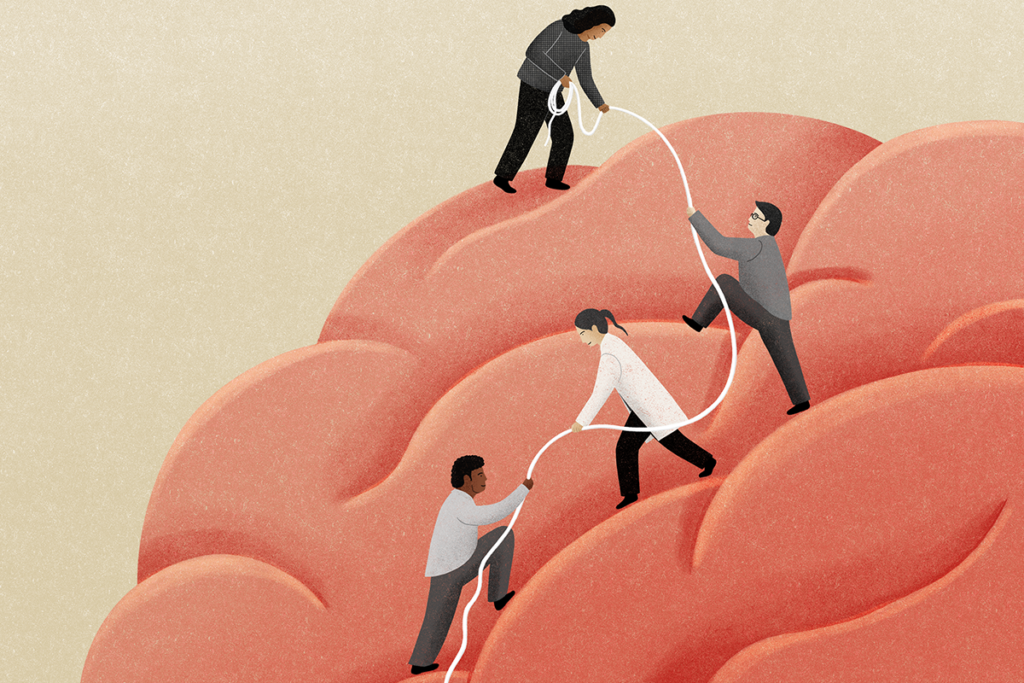
Aging as adaptation: Learning the brain’s recipe for resilience
Some age-related changes in the brain and in behavior are not solely the result of cognitive decline but rather part of a larger adaptive process.
Any seasoned baker knows the importance of being flexible. If you are missing an ingredient or hosting a guest with dietary restrictions, you might need to swap yogurt for eggs or oil for butter. The final product may differ, but it can still be rich and satisfying.
In much the same way, our brain constantly makes substitutions and adjustments in response to the inevitable changes in our internal and external environments. To understand these changes, scientists often compare the brain and behavior of older people, aged 60 and up, with those of younger people, aged 20 to 30. Despite considerable individual variability, older people—on average—have slower processing speeds, rely more on past experience to solve problems, and have less behavioral flexibility.
These findings have shaped our theories about how age-related changes in the brain drive behavior. In recent years, however, a conceptual shift has emerged, raising questions about whether some age-related changes are not solely the result of cognitive decline. Instead, some may be adaptive and address age-related constraints, such as changes in metabolism and increased inflammation. Moreover, scientists have begun to question whether young adulthood, characterized by a period of highly flexible decision-making, is the right benchmark to assess cognition across the lifespan. Given the evolving landscape of the aging brain, change is necessary, and not all deviations from the young-adult “benchmark” should be seen as decline.
The main challenge for neuroscientists is to determine which of these age-related adaptations are beneficial and which are detrimental. In other words, which substitutions retain the original flavors, and which result in a dish that falls flat?
A
ging studies characteristically find decreased cognitive flexibility in older people, but how well the group performs depends on which task is used to measure this trait. For instance, in one exemplary study, younger people did better on a “choice-independent” task that asked participants to maximize reward by exploiting new information, whereas older people did better on a “choice-dependent” task that relied more heavily on past outcomes. By making small tweaks to their experimental paradigm, the researchers highlighted how aging modulates key decision-making strategies and behaviors.Adaptations in the brain may drive these changes in behavior. However, adaptive brain function may come in a variety of flavors, research shows; the aging brain can adapt via several solutions at the molecular and systems level. Like a baker missing a key ingredient, the brain can handle age-related changes using several approaches.
One strategy is to stockpile key ingredients. Synaptic proliferation, as well as lowering overall neural activity, can buffer age-related cognitive decline or prolong cognitive function, research reveals. Another strategy involves adding more of an existing ingredient when another is in short supply: Older people who perform as well as younger people on a memory task recruit the prefrontal cortex bilaterally, neuroimaging shows, whereas younger people show unilateral activation of the region. A third strategy is to mix in something new. For example, recruitment of the rhinal cortex in older people can compensate for a lack of hippocampal activity during memory retrieval.
Conceptual and methodological advances in aging research are helping researchers explore these various adaptations. New machine-learning-based techniques for behavioral phenotyping are powering more nuanced analyses of large-scale behavioral data and unbiased evaluations of both spontaneous and learned behaviors. This approach delivers high-dimensional metrics of behavior across the lifespan, thus breaking the deeply rooted comparison between young and old. Similarly, by designing tasks with behavioral outputs that let participants apply different strategies, we can reimagine the underlying structure of decision-making and focus less on the elements that are missing and more on how different adaptations affect cognitive processes.
With the increase in computational power, researchers can now study the same individual, in both human and animal studies, over long periods of time to track individual changes in performance and adaptive strategies. Recent work has already shown that at least some aspects of molecular aging are individualized—calling for a similar approach in studying age-related changes in cognition and behavior. Finally, advances in neural recording make it possible to sample hundreds of neurons from multiple brain regions simultaneously in behaving animals, thus tracking the flow of information as an animal makes a decision.
Understanding how the aging brain adapts, and which strategies preserve versus disrupt function, is essential for promoting cognitive health across the lifespan. Reframing aging as adaptation rather than pure decline challenges us to rethink how we design experiments, interpret behavior and define “healthy” aging. It pushes us to embrace individual variability, in both human and animal studies, as a source of insight rather than noise. This approach has the potential to guide the development of targeted interventions and therapies, not to restore a youthful brain, but to support an adaptive one. If neuroscientists can, like able bakers, learn which substitutions still yield a satisfying cognitive dish, we move closer to redefining what it means to thrive into advanced age.
Recommended reading

Age-related brain changes in mice strike hypothalamus ‘hot spot’

The Transmitter’s most-read neuroscience book excerpts of 2025
Explore more from The Transmitter

Protein tug-of-war controls pace of synaptic development, sets human brains apart

Perimenopause: An important—and understudied—transition for the brain

